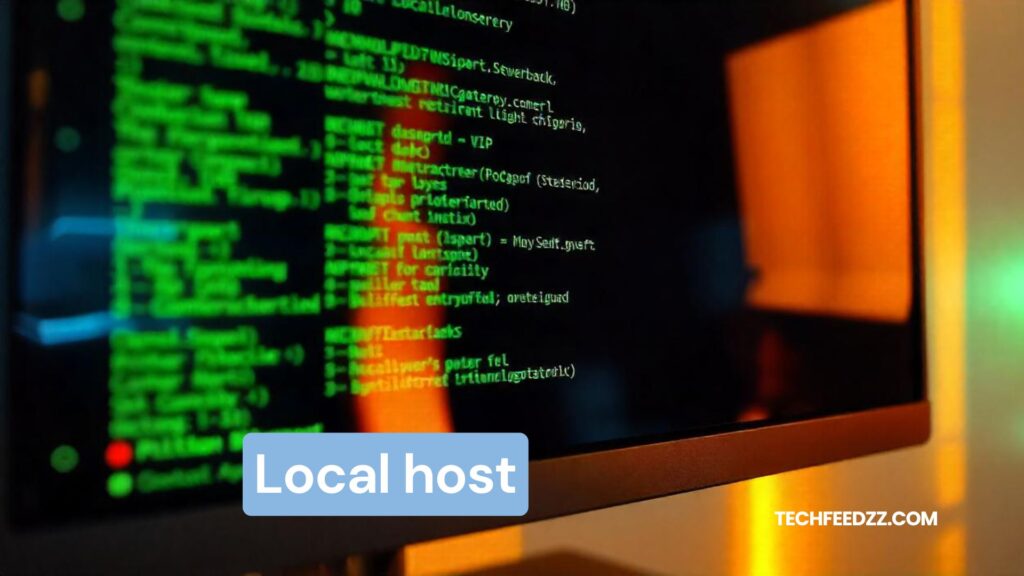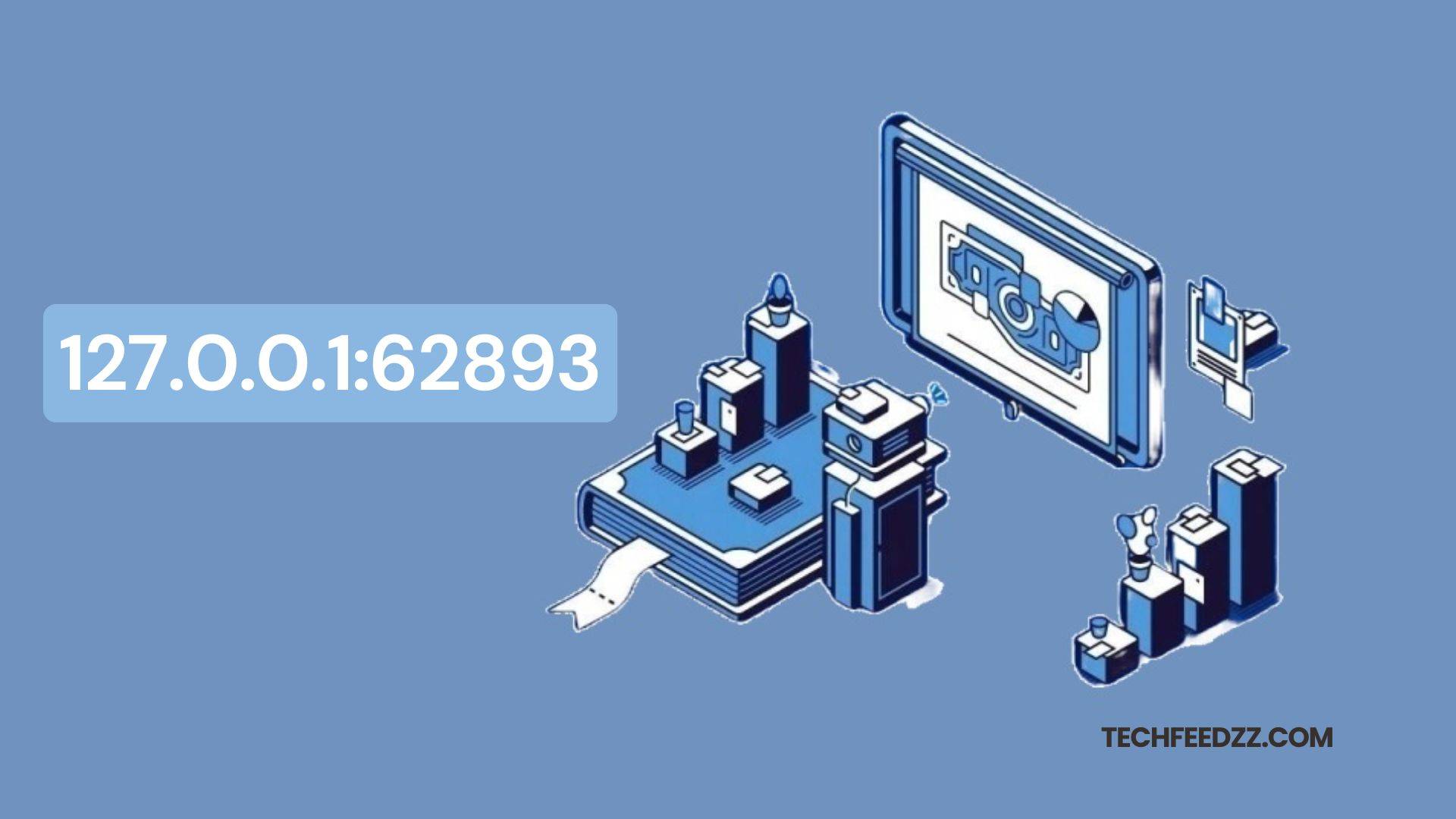127.0.0.1:62893: Its Role, Benefits, and The Best Repair Solution
127.0.0.1:62893 As part of modern networking and software development, the concept of the loopback address is extremely important, 127.0.0.1. Coupled with a port number, like 62893, this serves developers, testers, and IT experts with tremendous convenience. This article investigates how 127.0.0.1:62893 works, what advantages it brings, and the most common solutions to fixing its problems.
Before knowing what 127.0.0.1 is and why it’s termed as localhost,
A very common nickname of the IP address 127.0.0.1 is “localhost.” The term, in the context of networking, is a class of loopback addresses. In short, it will allow a computer to exchange messages with itself. Any networking program used for testing and troubleshooting includes a loopback interface.
What does “127.0.0.1” mean?
The IETF has made the “127” block for the use of “loopback”.
127.0.0.1-addressed packets never leave the host system.
Role of localhost:
It is used by developers to simulate a server environment on their machines. It allows testing of applications without the need for external servers.
Better Security
Communication with 127.0.0.1 can never leave the local machine; therefore, no intercept of data and outside hacking are possible. Thus, this is suitable for first installation and debugging purposes.
Easy Debugging
At times of errors, when debugged, using a loopback address will easily simplify the process. They will be able to figure out the issues locally on their environment before putting them on the live servers.
Top Troubleshooting Tips for Localhost:62893

Despite its advantages, you are likely to face problems with localhost:62893. Top troubleshooting tips include the following:
Check Application Settings: Ensure that the application or service you are planning to use on port 62893 is configured correctly. Misconfiguration may result in failed connections.
Verify Port Availability: You can use command-line tools to check whether port 62893 is available or occupied. Commands like netstat -can be used to identify active ports and their associated processes.
Firewall and Security Settings: Ensure that your firewall configuration allows traffic on port 62893. Adjusting firewall rules should be a cautious procedure to avoid causing security breaches.
Restart Networking Services: Sometimes, your networking services or the system may just need to be restarted. This can cure connectivity issues by clearing some temporary glitches or misconfigurations.
Update Software: All related software and services must be updated. Outdated applications may not support certain configurations or might have unresolved bugs.
Local Development
Many developers use the loopback address for local testing of web servers and many other applications. This provides a safe environment without interfering with live systems.
Educational Purposes
It is also useful for purposes of education. Students and also professionals can test networking ideas and configurations in a protected environment.
System Administration
127.0.0.1 is an essential part of the toolkit for system administrators, used to configure and maintain systems to ensure robust and secure internal communications.
What is Port 62893 and How is It Used in Applications?
Ports are numerical identifiers for specific processes or services on a computer. Port 62893 is an arbitrary high-numbered port often used for temporary, custom, or development purposes.
How ports work:
Whenever two applications need to communicate over a network, they use IP addresses and ports to establish these connections. So, for example, most web servers just listen on port 80 by default, while a developer might want to test a new API on 62893.
Why 62893?
A higher number of ports-more than 1024 have free use with less of a chance that they could conflict with widely known services.
Common Problems with using 127.0.0.1:62893
Using 127.0.0.1:62893 may sometimes become problematic. Here is how to solve such issues:
Problem: Port already in use
Problem cause: Another application uses port 62893.
Solution: Tools like `netstat` or `lsof` should be used to find which process is causing conflict. Terminate it, or change to a different port.
Problem: Connection refused
Problem cause: An application that has bound 127.0.0.1:62893 is not running.
Solution: The service should be active and correctly configured.
Problem: Firewall not allowing access
Cause: Firewalls do block localhost connections for security purposes.
Solution: Add an exception for 127.0.0.1:62893 in the firewall.
Security Risks Associated with Using 127.0.0.1:62893
While 127.0.0.1 is secure by its nature (it does not expose traffic externally), misuse of configurations may lead to vulnerabilities.
Frequently encountered mistakes:- Exposing sensitive services by accidentally binding them to all interfaces (`0.0.0.0`) instead of 127.0.0.1.
Running vulnerable services on localhost without extra security measures.
Best practices:
Always restrict sensitive services to 127.0.0.1.
Use strong authentication mechanisms for localhost services.
Top Benefits of Using 127.0.0.1 and Custom Ports for Developers
Developers often use 127.0.0.1 and custom ports such as 62893 for several reasons:
Isolated testing environment:
It allows testing without interfering with production systems.
No external dependencies:
Applications can run locally, even without an internet connection.
Performance optimization:
Localhost communication is faster as it avoids external network layers.
How to Change and Configure Port 62893 for Your Needs
Port configurations often depend on the application. Here’s a general approach:
1. Locate the configuration file:
Locate your application’s configuration file. It is usually named `config.json`, `application.yml`, or something similar.
2. Change the port setting:
Change the port number to 62893 or any desired value. For example:
Server:
port: 62893
Restart the application:
Test the setup:
Open the application via `http://127.0.0.1:62893` to test that it works.
Usage in Web Development Projects using 127.0.0.1:62893

For web development projects, web developers depend on localhost and custom ports for running local servers. Node.js, Flask, and Django provide the ease of binding to 127.0.0.1:62893.
Example using Node.js
Benefits:
Quickly test web applications.
Debug in a controlled environment.
Debugging Techniques for Localhost Ports
Debugging localhost issues requires methodical approaches:
Check service status:
Verify if the application is running and bound to the correct port.
Examine logs:
Application logs often reveal issues such as misconfigurations or errors.
Use diagnostic tools:
Tools like `curl`, `Postman`, and browser developer tools can be used to validate connectivity.
Monitoring and Management Tools for 127.0.0.1:62893 Traffic
Good monitoring ensures great performance and security:
Wireshark:
Analyze network traffic, even on localhost.
Netstat:
Display active connections and listening ports.
Port management utilities:
Tools like `lsof` or `fuser` can help identify processes using a particular port.
Use Cases of 127.0.0.1:62893 in the Real World
Local development environments:
Developers use it to run APIs, databases, or web applications locally.
Temporary testing setups:
QA teams use it to test features without external dependencies.
Internal tools:
Organizations deploy internal dashboards and monitoring tools accessible only via localhost.
Conclusion
127.0.0.1:62893 exemplifies the versatility and power of localhost and custom port usage. Developers and IT specialists can optimize its potential while preserving security and efficiency by comprehending its workings, advantages, and troubleshooting methods. Gaining proficiency with 127.0.0.1:62893 is essential in the digital realm, whether you’re debugging an application or configuring a local server.
Read More About: techcrunch disrupt






